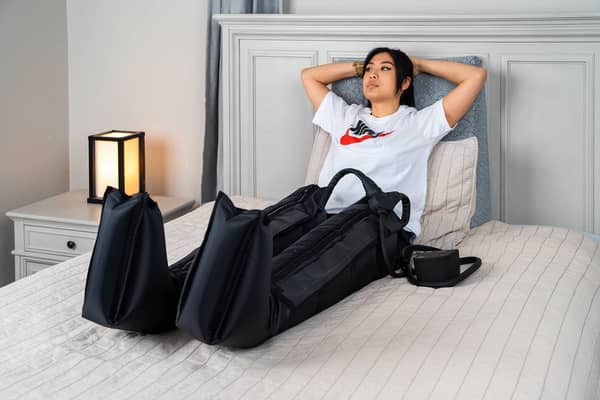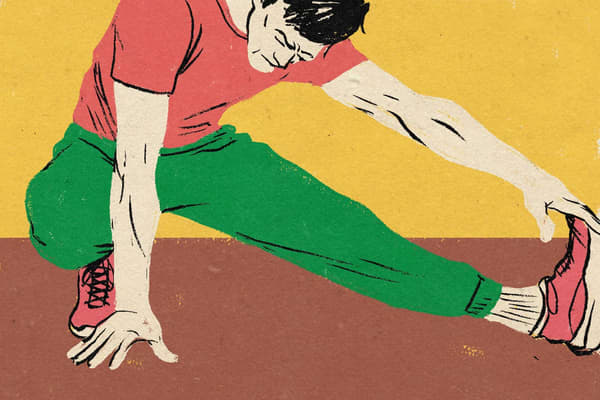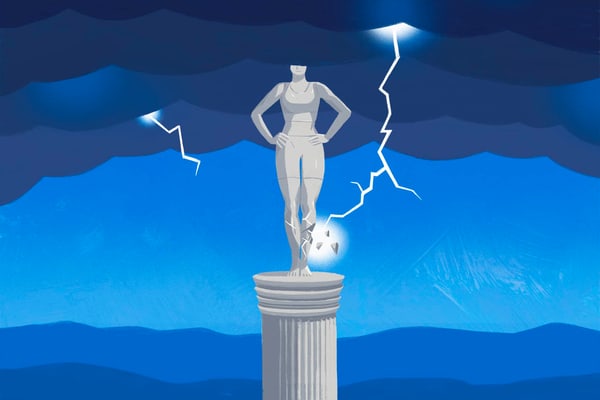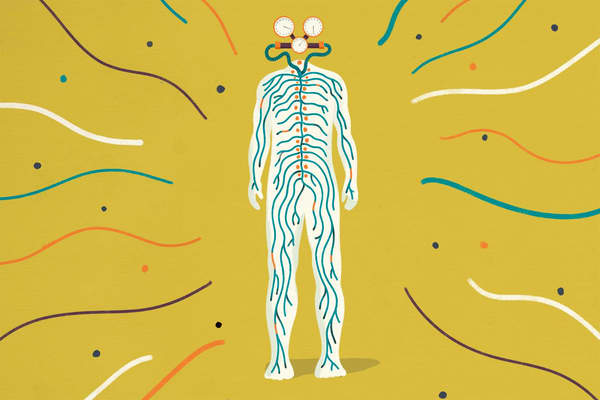What is Raynaud's Disease—and How Does It Affect Cold-weather Running?
Health & Wellness
It's the condition that causes your fingers to change colour and feel numb when you're exposed to cold temperatures or experience stress.
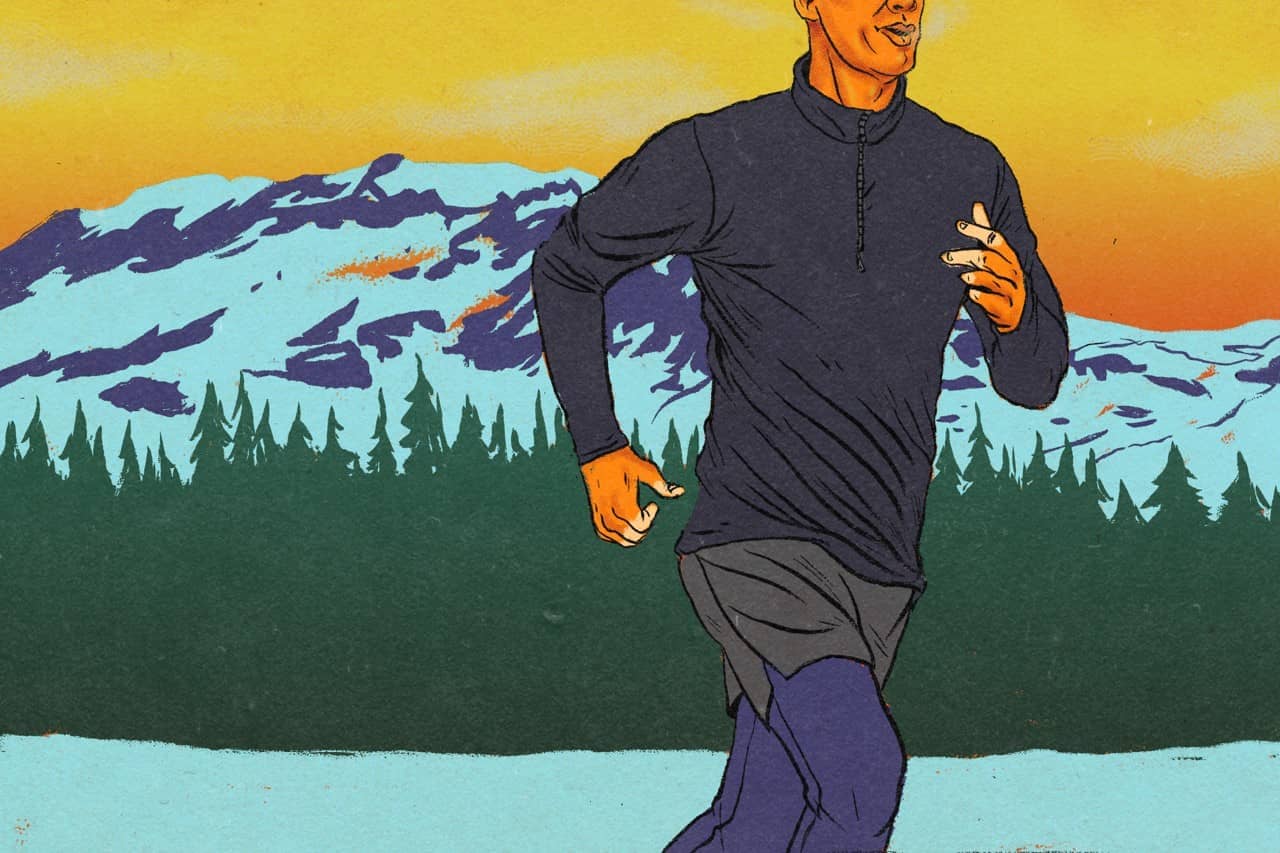
If your fingers or toes become numb, tingly, or turn white or a blueish-purple when you run in cold temperatures or are otherwise exposed to the cold or stress, know you're not alone.
Raynaud's disease, also known as Raynaud's phenomenon or syndrome, is a common and benign condition where the arteries to the fingers or toes constrict in response to low temperatures or stress, according to the Mayo Clinic. When the arteries spasm and narrow, blood circulation decreases, which can spur a range of annoying, uncomfortable symptoms (Think: aching cold fingers).
What Is Raynaud's Disease?
First, it's important to differentiate between primary and secondary Raynaud's. Primary Raynaud's is more common and usually milder, as it's not caused by a medical condition, like a connective tissue disease. On the other hand, secondary Raynaud's is rarer and usually more serious, as it is caused by an underlying condition or disease, medication or lifestyle factor, like diseases of the arteries or smoking.
Regardless of the type of the condition, when someone with Raynaud's is exposed to cold or stress, the arteries at the tips of the fingers or toes (or, less commonly, other parts of the body, like the nose) constrict, explained Ido Weinberg, MD, vascular medicine specialist director at Massachusetts General Hospital.
This reaction is not problematic: in fact, it's a protective mechanism our bodies use to conserve oxygen in times of stress and to prioritise blood flow to our organs, according to the Cleveland Clinic. However, it becomes an issue when the response is exaggerated, with the arteries overly constricting or constricting in not-so-cold temperatures, Weinberg said.
(Related: Should You Try an Ice Bath for Post-workout Recovery?)
Symptoms of Raynaud's Disease

The symptoms of this drop in circulation can vary, and they're generally not severe, as most people have primary Raynaud's—which is milder. Despite the condition type, most folks will experience numbness, tingling, stiffness, coldness or colour changes in the affected areas.
When circulation drops, fingers or toes can look white or blue. Then, they turn red when normal blood flow returns, Weinberg said. As soon as the body becomes warm again, symptoms should go away, he added. However, in extreme instances (usually with secondary Raynaud's), people can feel severe pain and their skin can break, Weinberg said.
Bear in mind that these symptoms can be indicative of other conditions, which is why it's so important to see a doctor first to make a proper diagnosis. For example, diabetes can cause symptoms that resemble Raynaud's—such as numb or tingling hands and feet, as per the CDC—rheumatologist Jonathan M. Greer, MD, said. Using tobacco can also cause Buerger's disease, which reduces circulation and therefore causes similar symptoms, he said.
Because diagnosing Raynaud's can be challenging, Greer recommended first seeing your general doctor. Then, if your doctor decides it's necessary, you'll be sent to a doctor who specialises in this condition, such as a rheumatologist or vascular surgeon.
Reasons for Raynaud's Disease

Raynaud's is common, and it affects more women than men. In fact, Greer estimated that 10–15 percent of all women have primary Raynaud's, possibly due to the fluctuation in female sex hormones, as the findings of a 1996 study noted in the journal Angiology, suggest.
Another risk factor for Raynaud's is taking medications that constrict blood vessels (like some drugs for migraine, cancer, ADHD, congestion and heart conditions). Caffeine, smoking tobacco, and certain diseases and conditions (such as lupus, hypothyroidism, rheumatoid arthritis and scleroderma) can also lead to the condition, as can a lot of pounding on the feet. Greer explained that vibrating tools, like jackhammers, can cause Raynaud's in the toes.
(Related: Everything You Need To Know About Jump Squats)
Greer also emphasised the importance of being mindful of stress levels as a helpful preventive mechanism. He said he urges patients to try to avoid stress, as it can cause the constriction of the blood vessels and raise blood pressure. According to the Raynaud's Association, those with the condition have overactive blood vessels that spasm and subsequently become narrow, which inhibits optimal blood flow. This is why an emotional response, like stress, can cause a flare-up.
The syndrome is more of an annoyance than a serious health concern. "A lot of people ignore it, and, for the most part, that won't be a problem", he said. However, if your skin is white for a long period of time, your tissues could become damaged. In that case, see your doctor to investigate secondary causes (like smoking or diseases of the arteries), he said.
Although Raynaud's is, in most cases, not a cause for alarm, there is one risk factor worth bearing in mind. Weinberg explained that it's more difficult for those with Raynaud's to sense when they're in danger of contracting frostbite. He urged being particularly vigilant when it comes to pain and open wounds.
How Can You Prevent Flare-ups

"Usually, all you need is to keep warm", Weinberg said. Protect your body from low temperatures by avoiding the cold (including ultra-air-conditioned spaces). If you'll be venturing into the cold—even to head into the frozen food aisle of the supermarket—dress warmly, Greer said.
Along with wearing a jacket, Weinberg recommended mittens, a beanie or warm hat, and moisture-wicking socks. For those with symptoms in their toes that could result from pounding, he also advised supportive running shoes. And, again, managing stress levels can also be supportive.
(Related: What To Know About Running in the Rain)
If you're experiencing symptoms, gradually warm the affected areas, Weinberg said. For instance, run your fingers or toes under warm water, Greer said. To treat extreme cases, your doctor might prescribe a medication, like a calcium channel blocker (a blood pressure drug), topical nitroglycerin or Viagra, Greer said.
Words by Dina Cheney

Nike Run Club
Listen to the Guided Runs in the Nike Run Club App and run with some of the best coaches and athletes, like Eliud Kipchoge, Shalane Flanagan and Mo Farah. Our Guided Runs give you the guidance you need to listen to your body, adapt to your training plan and become your own best coach.

